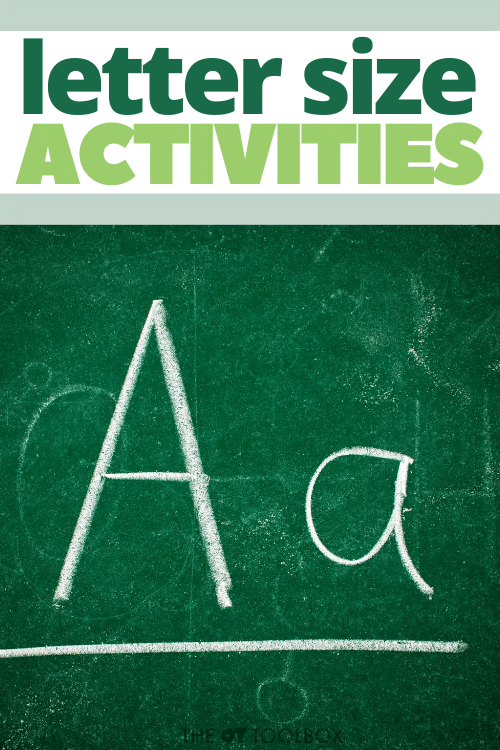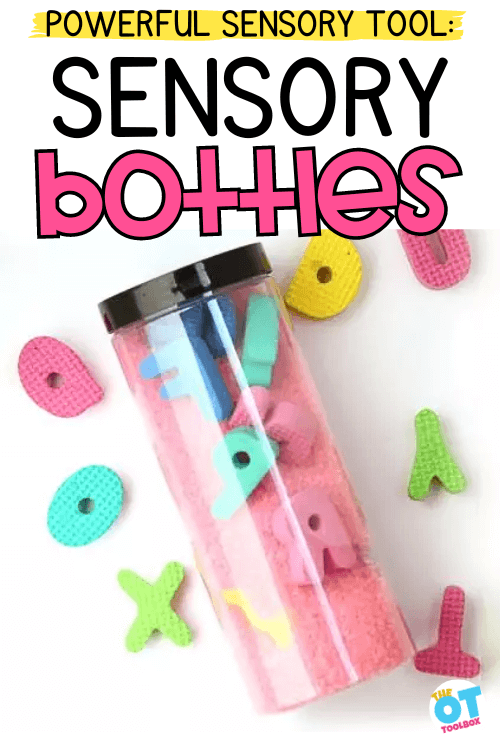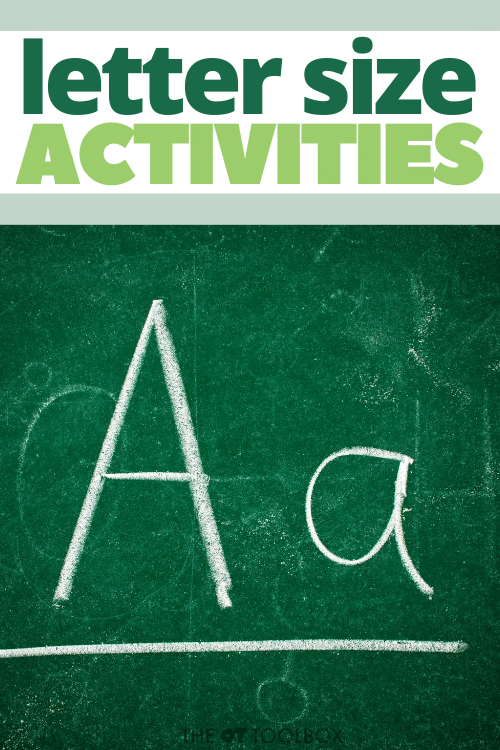Working to help a child write with correct letter sizing and placement on the lines? Are you trying to come up with letter sizing activities to help kids write smaller letters that fit between the lines on the paper? Are you struggling with a child that forms letters without regard to size or line awareness? Letter size awareness is a real struggle for some kids!
This post is part of our Christmas in July giveaway series.

Here, you will find suggestions to work on letter size awareness, along with a letter sizing activity that can be including into any handwriting curriculum. It’s one that focuses on how to form smaller letters, numbers so kids use a more precise pencil control that they can use when writing on any paper.
Letter Sizing Strategies
Do your students have trouble making their letters or numbers the right size? You might have seen kids that write without regard to the lines. Or, they may copy or independently write letters that take up the whole space, no matter what lined paper is used.
Other kids form letters that are correctly sized on the lines…but only when they have boxes drawn for each individual letter. But, that accommodation simply isn’t a possible option all of the time, for consistency and carryover.
During their earliest exposure to handwriting activities, young children at the preschooler and kindergarten ages may form large letters. Letters might fill the whole page or the whole available space. These forms are not always completed with a motor plan in place. the lines of the letters might be more of strait lines that intersect.
As kids gain more experience with writing with a pencil and with writing letters, they gain a motor plan that they can use on any surface and without a visual model for the letter.
Students then start to notice and use a letter size differentiation, or letters that are tall letters and reach the top line (e.g. b, d, f, h, k, l, t), letters that have tails that hang below the bottom line (g, j, p, q, y), and letters that rest in the bottom half of the writing space (a, c, e, i, m, n, o, r, s, u, v, w, x, y, z).
Kids will notice the differences between these differently sized letters and the upper case letters which are all the same size.
All of this letter size awareness occurs through experience and practice.
However, when there isn’t experience or practice time…or there is a visual perceptual concern, or a visual motor issue, there may be trouble or inconsistencies with letter placement.
That’s when interventions may be needed to help work on letter sizing.
Try some of these letter sizing activities
>> Using regular notebook paper, or bold lined, baseline paper, highlight the bottom half of the writing space. This is where the small letters are placed. Explain to the child that the tall/Capital letters start in the white, and the little letters start the grey(photocopied paper or yellow highlighted area). This writing paper is an easy fix for many writing situations.
>> Use modified paper. Here are free adapted paper types for all handwriting ages.
>> Try the box and dot strategy. This is a nice way to teach size awareness for kids who are just beginning to notice letter size.
>> Re-teach letter size of the upper case letters. Allow the child to notice where each letter starts. Then work on tall letters which start at the same point on the writing area. Next, teach the letters that are located in the bottom half of the writing space (the small letters). Finally, re-teach the tail letters which hang below the baseline. In each set of letters, allow students to notice where each letter rests.
>> Try any of these letter size activities.
>>Reduce distractions on the page by using black paper with white forms in increasingly smaller form size, like in the BlackBack writing program. This writing program allows students to form the motor plan for upper case letters and lower case letters, as well as numbers.
The BlackBack Writing Program depicts strokes, upper and lower case letters and numbers in white on a black background which helps the child see their strokes as they use the white space. Additionally, there is only one image on the page eliminating distraction from competing images and increasing attention to the single task on the page. Each letter, number and stroke has 6 sizes. The first size is very large and the last is the height of a wide-ruled notebook paper.
The BlackBack Writing Program can be customized to begin where the child is in his/her writing journey. The letters, numbers, and strokes can be used on its own or as a supplement to any writing program. The BlackBack Strokes, Letters and Numbers programs can be combined or used separately.
Black Back Writing Program
I’m so excited to partner with Two Sparrows Learning Systems to offer this Black Back Writing Program.
It’s an awesome handwriting tool that addresses pencil control, motor planning, size awareness, visual motor skills, visual distraction, and more.



